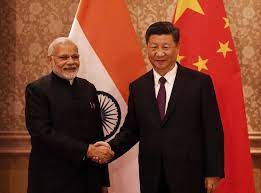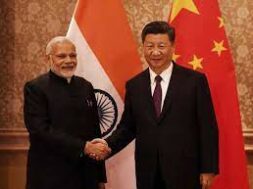
Manas Dasgupta
NEW DELHI, Nov 15: Bali in Indonesia was a shade better than Samarkhand in Uzbekistan. While there was no visuals of even a hand-shake in Samarkhand, the Prime Minister Narendra Modi and the Chinese president Xi Jinping at least shook hands and “exchanged pleasantries” in Bali.
A short video showed PM Modi speaking to the Chinese President at a dinner for G20 leaders hosted by Indonesian President Joko Widodo in Bali on Tuesday evening. PM Modi was seen walking up to President Xi before going for a handshake. Both leaders were in traditional Batiq shirts worn by G20 delegates. But soon the cameras went off the two leaders to some other directions in the hall.
The visuals drew attention because the two leaders have not met for bilateral discussions since 2020, when a fierce border clash broke out between Indian and Chinese troops at Galwan Valley in Eastern Ladakh. PM Modi is scheduled to meet with various G20 leaders for bilaterals on Wednesday but China so far is not on the list.
In September, Prime Minister Modi and President Xi came face-to-face at the annual summit of the Shanghai Cooperation Organisation (SCO) in Samarkand in Uzbekistan on September 15 and 16, for the first time since the start of the border standoff in eastern Ladakh but there were no visuals of any handshake or exchange of pleasantries there.
Questions had been raised about the possibility of a meeting between PM Modi and Xi Jinping on the margins of the G20 summit amid strained ties over border incursions by China in Eastern Ladakh over the past two years. Twenty Indian soldiers died for the country in the Galwan clashes that broke out in June 2020. Over 40 Chinese soldiers were reported killed or injured in that incident, which set off a series of confrontations between the two nations.
After multiple meetings between military commanders, Indian and Chinese troops pulled back from key points including Gogra-Hot Springs in Ladakh. The Chinese forces returned to pre-2020 positions. Before the G20 summit, Beijing noted that good ties with New Delhi “is in the interest of both countries”.
After the stand-off began, the Army mobilised thousands of troops to the Line of Actual Control (LAC) the Corps of Engineers used 3D printing to construct 22,000 temperature controlled, re-locatable habitat in the high-altitude areas, according to sources in the security establishment. On the connectivity front, forward areas of Leh will have all weather connectivity with alternate axis under construction by 2026 boosting the Army’s movement and sustenance to forward areas.
“With progress on the alternate axis we will have 365-day connectivity into Leh. It will be a big boost to our sustenance and logistics of the Army in the Ladakh sector,” official sources said. “Work on 4.1 km long Shinkun La tunnel which will start shortly and the planned target is 2026 we should have the tunnel and entire axis coming through. Then it will be 365 days, the source stated.
The sources said while the Atal tunnel provide unhindered access to Lahaul and Spiti valley and beyond that three more tunnels are required to be constructed, Baralach La, La Chung La and Tanglang La tunnels, with total distance being approximately 35kms. “This requires huge investment, time and effort.”
Work on the 255 km long strategic Darbuk-Skyok-Daulat Beg Oldie (DBO) road is complete. The 35 bridges on it are currently being upgraded to Class-70 specifications, which will allow them to handle heavy tanks and artillery. The upgradation is expected to be completed in 1-2 years, the source stated.
Infrastructure development has gained urgency given China’s massive expansion along the LAC since the standoff which includes, roads, habitat, airfields and ammunition dumps among others. Referring to this Army Chief Gen Manoj Pande said last week that infrastructure development, that was going on “unabated” adding there are roads, helipads, airfields including roads right up to the passes.














